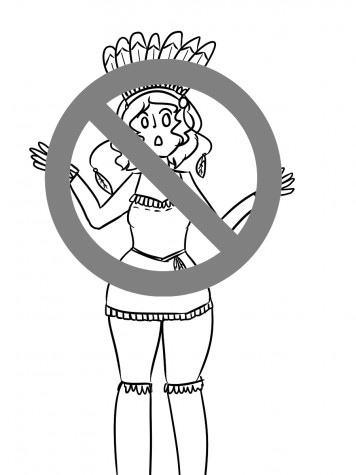Dressed to oppress: controversial costumes
October 22, 2014
It’s that time of year where the leaves are falling, the air is chilling and everything including the air is pumpkin spice; this means that Halloween is coming. Halloween is an old celebration that started around the early 19th century, although the costume culture in the United States began around the 20th century. Racism connected with Halloween costumes has always been a problem but only just recently have people been questioning the ethics of what we wear on the 31st of October.
Halloween costumes were originally meant to be scary, reflecting the spiritual and/or evil parts of Halloween but over the years people started dressing in whatever costumes they thought could be fun. Critics using the term “cultural appropriation” to describe the problematic Halloween costumes often cite how the oft-racist representations of other cultures has become a widespread issue. Hamline students expressed their opinions on Halloween and what they define as inappropriate Halloween costumes.
When asked what’s an innappropriate costume for Halloween, first-year Kyle Knapp said, “Native American stuff, that’s cultural appropriation, we do not dress up as ethnic groups… It’s a hard issue when it’s a character, like wanting to dress up as Pocahontas, but I would say just don’t do it. I think [the decision] should be left to the groups affected, not to the majorities.” 
First-year Adem Ojulu and junior Madeline Stauber had similar thoughts on problems with Halloween. “When people dress up as Native Americans, when they paint their faces black or wear tribal paint, that’s inappropriate,” Ojulu explained.
Stauber added, “Don’t be naked. I don’t think dressing up as a certain culture is a good idea ever. Sugar skull [costumes] make me mad.”
Lots of students are aware of what disrespectful costumes are, yet these costumes are still being bought and worn. There are Halloween websites like Halloweencostumes.com that, in a whole tab named “international costumes” have costumes named “Arab Costume,” “Women’s Eskimo Costume,” “Sexy Japanese Doll Costume” and “Sexy Mexican Shooter Costume,” and most of these costumes come in children’s sizes as well. People will spend over 50 dollars to objectify a culture.
Sophomore Lily Lenarz Hooyman said, “I don’t think people do it to specifically target a group or ethnicity…it comes from a place of wanting to be like them…but they don’t take the time to think ‘where did they buy this? Why did I get this?’ Some think it will be hot, and that’s harmful because it’s superficial and disrespects the heritage and morals [of the culture].”
On a lighter note, some Hamline students shared their costume ideas for 2014. Knapp said, “I wanted to go as Vincent Vega from Pulp Fiction, but then I decided not to because it’s too complicated; I want to do something Quentin Tarantino themed.”
Stauber had a plethora of ideas. “I really want to dress up as a spice rack, I’d just buy a really big bra and put spices in there. Or static electricity, I would just stick socks on myself. I could also be a Freudian slip, I’d wear a slip and then write “Freud” somewhere on myself, or wear a Freud mask.”
First-year Trey Hall interjected, “The best thing I could think of is a pumpkin.”
While the spirit of Halloween is fun and playful, it doesn’t leave room for the discrimination and commodification of other cultures. In 2014, it may be a good idea to start taking that seriously.
